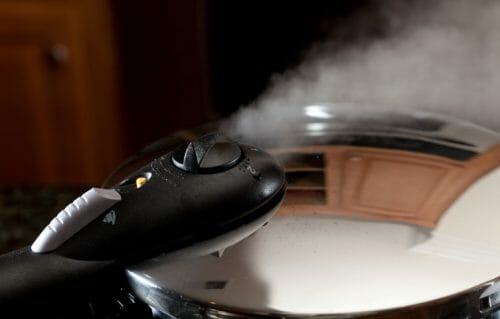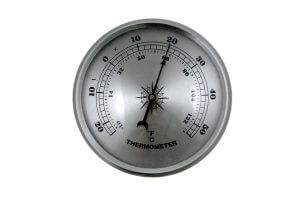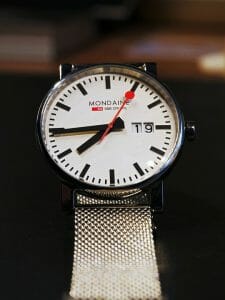With ordinary cooking methods, such as traditional stovetop cooking, there is only one way to open the lid (well, there isn’t a definite way to do that). However, pressure cooking is different.
When it comes to pressure cooking, every recipe has its own unique way to remove the lid. And the release method counts a lot in determining the quality and taste of the food.

Similarly, pressure cooker release methods differ with the manner of cooking. The method that suits stovetop cooking might not suit the electric version of it. This post talks about the “How’s” and “Why’s” of different pressure release methods used for pressure cooking.
Three Must-Know Principles
If you use the wrong method, chances are you’ll end up with rock-hard meat, limp veggies, and bean mush. So, better learn these three principles to determine the accurate pressure release method.
- The Food is being Cooked When You Think It’s Not
This happens when the pressure is being built and released simultaneously. At this moment, the internal temperature tends to move down from above the boiling point. It signifies that the food is still cooking.
If you’re cooking legumes, meat or dessert, allow the food to cook during this time period. But if you’re cooking vegetables, the quick release method is more suitable.
- Movement Depends Upon the Release
The speed of pressure release is directly proportional to the movement of food inside the pot. The faster the release, the more will be the movement in food. As the pressure is released, the bubbles break up to the surface.
With quick opening, the bubbles will release violently and they fling foam and food particles onto the internal surface of the lid. Some particles may be deposited onto the safety valve as well.
With the natural release method (slow opening), the bubbles will rise slowly and delicately. The natural release method is suitable for foods like stock or beans so that there will be the least movement in the food.
- Speed of Evaporation Depends Upon the Food Temperature
 How quick or how much the evaporation will depend upon the temperature of the environment and that of the food.
How quick or how much the evaporation will depend upon the temperature of the environment and that of the food.
With the quick release method, you will get accelerated evaporation coming out of the food that’s still been cooking and the liquid along with it. On the other hand, if you opt for the slowest release method, the evaporation will not be as vigorous because the food will have already lost the temperature during the process.
You can use the slow opening method for juicy recipes, such as roasts, while opting for the quick release method for recipes that need reduction, such as sauce.
5 Pressure Release Methods for Pressure Cooking
This list includes some conventional and self-invented methods used for releasing the pressure. Some of them may be unofficial, but they only give you more options and more choices. The list will explain the quickest method and will move on to discuss other methods with respect to increasing time.
- Cold Water Release
If you need to immediately release the pressure as well as a steep reduction in the temperature inside, run the cold water on the lid, making sure that the valve remains dry. While pouring cold water, tilt the pressure cooker slightly so that the steam runs over the top, not over the valve or the vent pipe. In this way, the pressure cooker will cool down more quickly.
This method is useful for cooking recipes with short cooking times, such as tender-crisp vegetables and seafood. Alternatively, it can be used when the cooking needs to be stopped immediately.
However, the method may be dangerous and is not recommended, unless you have taken all precautionary measures. Instead, use the next method in the list.
- Quick Release Method
This used to be the quick release method, but nowadays, with the introduction of a special release valve in modern pressure cookers, this method is also referred to as “Normal release.” The special release valve opens with a push button (or by turning the knob), releasing the pressure rapidly.
The release process takes up to three minutes. Expert chefs consider it to be a great help, especially when they want to add more ingredients or check whether the food is done. After releasing the pressure, you can open the lid without cooling off the food.
If you’re cooking thick recipes, like risotto or chili, you can use this method without opening the cooker, just to release excessive steam.
- Slow Normal Release Method
This method may not be available in most recipes, but it’s worth a try. It’s almost similar to the Normal Release, but you need to release the pressure slowly and carefully by using the pressure release valve.
The release process can take between 5 and 10 minutes, depending entirely on the type of pressure cooker and the amount of food in it. Electric pressure cookers or high amounts of food need more time to release the steam.
If the pressure release valve is only meant for full-throttle release, then you need to release it in short intervals – giving a 10-second break between two successive bursts. This method is more suitable when there are chances of foam coming out.
You can use this method when you cannot wait for natural release. The method can be applied on fruits, grains, and legumes.
- Ten-Minute Natural Release Method
 This is another unconventional method that takes about 10 to 15 minutes for releasing all the steam. The time after 10 minutes depends upon the amount of steam remaining inside the pot. If you’re using an electric utensil, the process will take longer.
This is another unconventional method that takes about 10 to 15 minutes for releasing all the steam. The time after 10 minutes depends upon the amount of steam remaining inside the pot. If you’re using an electric utensil, the process will take longer.
In this process, allow the steam to release naturally for 10 minutes, then switch to the Slow-Normal method. If the pressure inside takes less than 10 minutes to go down, wait for the time to complete before finally removing the lid.
This method is suitable for cooking grains without applying extra heat to the pressure cooker. You can even try this method on recipes that utilize e natural release method.
- Natural Release Method
Slowest of all, the Natural Release method takes up to 30 minutes to release the entire pressure and steam off the food. The time duration depends on the fill level and the type of utensil being used (electric cookers or fuller cookers take more time).
You can understand that the pressure is released in balance and it is meant for delicate and slow cooking after the heat is turned off. During the release, food that tends to expand or produce foam can be cooked and cooled simultaneously.
You can use natural release methods with so many foods, such as the following:
- Legumes
- Grains
- Desserts
- Meat
- Stock
Finally
In conclusion, follow these instructions:
- Read the manufacturer’s manual thoroughly and determine the release method. Follow the release method mentioned with the recipe.
- Don’t take risks with large pots if you want to use the cold-water release method. Use an alternative method.
- For foods that expand, foam or froth or for liquids, do not use the quick release (normal release) or slow-normal release method.
- Avoid using 10-minute natural release or natural release methods on foods including fish, vegetable or recipes having a short cooking time.
Thank you for the article and the suggested useful tips.